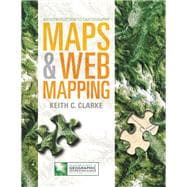ALERT: Before you purchase, check with your instructor or review your course syllabus to ensure that you select the correct ISBN. Several versions of Pearson's MyLab & Mastering products exist for each title, including customized versions for individual schools, and registrations are not transferable. In addition, you may need a CourseID, provided by your instructor, to register for and use Pearson's MyLab & Mastering products.
Packages
Access codes for Pearson's MyLab & Mastering products may not be included when purchasing or renting from companies other than Pearson; check with the seller before completing your purchase.
Used or rental books
If you rent or purchase a used book with an access code, the access code may have been redeemed previously and you may have to purchase a new access code.
Access codes
Access codes that are purchased from sellers other than Pearson carry a higher risk of being either the wrong ISBN or a previously redeemed code. Check with the seller prior to purchase.
--
For general education mapping/cartography coursesMaps and Web Mapping establishes an innovative, eText-only introduction to the history, principles, and current technologies used in mapping and cartography in a way that’s never been done before. Created to work with resources in Mygeoscienceplace.com, this solution engages you with interactive tools, including MapMaster™ interactive maps, Google Earth™ exercises, lecture videos, Map Projection animations, and more. This affordable online-only solution seamlessly integrates narrative text with a dynamic, interactive media experience, creating a rich learning environment and working together to help you develop spatial reasoning skills and practice observation, experimentation, and critical thinking.
This program presents a better teaching and learning experience—for you. It provides:
- Personalized learning with Mygeoscienceplace.com: The online-only eText and Mygeoscienceplace.com work together to provide interactive, cutting-edge cartography and learning tools that engages you in the study of mapping and cartography.
- Current cartography tools and technologies: The author’s expert knowledge of the most current, contemporary technologies and applications of mapping and cartography is integrated throughout the book, covering both commercial and open sources as well as desktop and mobile access. Many images and locations in the book include coordinates that you can click to directly link to online maps.
- Time-saving navigation and study tools: Study and move through the course material, using the eText’s learning path with chapter-opening Learning Outcomes, Checkpoint questions, summaries, and end of chapter questions.
0321896823 / 9780321896827 Maps & Web Mapping Plus MyGeosciencePlace with Pearson eText -- Access Card Package
This package consists of:
0321972589 / 9780321972583 MyGeosciencePlace -- Pearson eText -- for Maps & Web Mapping
0321972597 / 9780321972590 MyGeosciencePlace -- Instant Access -- for Maps & Web Mapping








